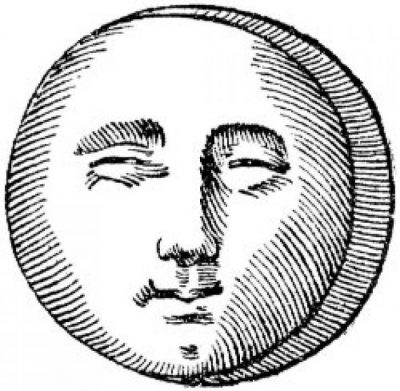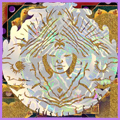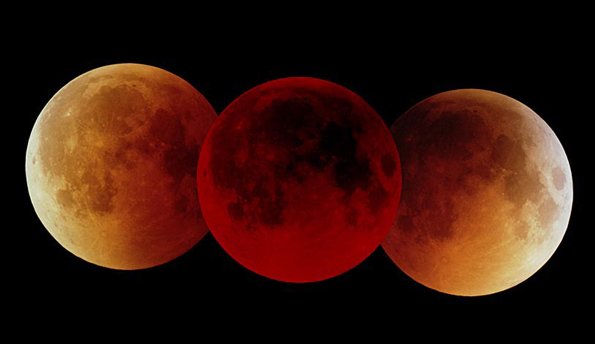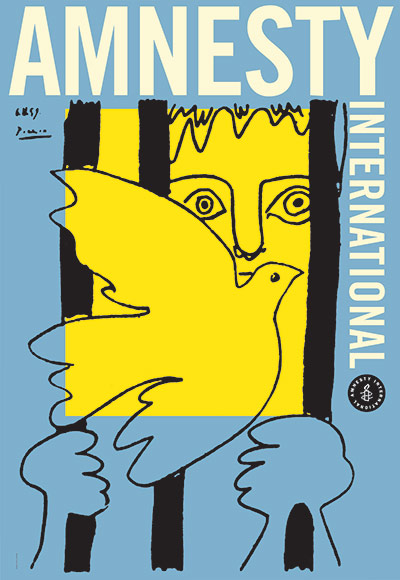TROPICAL or SEASONAL ZODIAC
versus
SIDEREAL or STARS ZODIAC
THE PRECESSION OF THE EQUINOXES
A difficulty the beginner encounters (and a weapon in the hands of Astrology’s critics) is the fact that in Astrology we say that the Sign Aries, for example, heralds the Spring Equinox in the northern hemisphere and the Autumn Equinox in the southern hemisphere, when we should know that the constellation (group of stars) of Aries is not anymore found with the Sun at the Spring/Autumn Equinox the 21st of March every year. Once upon a time (about 2000 years ago) the constellation of Aries did indeed rise and set with the Sun around the 21st of March every year. At present instead it is the constellation of Aquarius which rises and sets with the Sun at this time.
This discrepancy is due to the so called Precession of the Equinoxes (discovered by the Greek astronomer/astrologer Hipparchus of Nicea – 190/120 BC).
What Hipparchus discovered is that the constellations are not fixed, as the astronomers before him believed, but that they slowly shift in a backward motion (when compared with our own orbital motion) at the rate of one degree every 72 years. The slowness of this motion is the reason why it escaped the attention of numerous observers for many centuries.
The motion itself is now scientifically explained by modern astronomers as due to a wobble of our planet. The Earth isn’t a perfect sphere but it has rather the shape of a mandarin, flat at the top and bottom (polar regions) and bulgy at the Equator. The combined forces of Moon and Sun’s gravity make the Earth gyrate like a spinning top, so that, to keep its relative position in space, the Earth has to make a wobbling motion. This wobble causes the planet to regress 50 seconds of arc (less than a minute of arc) every year. Therefore, after completing its orbit around the Sun every year, the Earth doesn’t return to the same relative position in space, but 50 seconds of Celestial Longitude earlier. 50 seconds added up make a whole degree in about 72 years.
The total period of Precession (a complete round of 360 degrees) lasts 26.000 years. During this time the South and North Poles both describe a complete circle in space.
So, while now, for instance, we look upon the star Polaris (in the constellation of Ursa Minor, the Little Bear) as the northernmost star, the closest to the North Pole, in 3.000 BC the star Alpha Draconis (in the constellation of Draco, the Dragon) would have been the closest to the North Pole. In 7.500 AD the star Alpha Cephei (in the constellation of Cetus, the Whale) would be our choice; in 14.000 AD the star Vega (in the constellation of Auriga, the Charioteer). Only in 28.000 AD the star Polaris will be our choice again.
So how modern astrologers justify their saying that the Signs Aries and Libra herald the Equinoxes, the Signs Cancer and Capricorn the Solstices, and the other Signs the seasonal changes which they used to forerun thousands of years ago but they do no longer?
The answer to this question is simple: what in western Astrology we call the Signs of the Zodiac are not ever to be confused with the Constellations which bear their same names. But why? The Signs of the Zodiac represent simply different portions of the seasonal year. They indicate the ever changing, yet ever the same, relationship formed by the Earth and the Sun, due to the Earth’s Orbital Revolution around the Sun in one year, every year.
The 12 Constellations, which bear the same names as the astrological Signs, are only some of the 48 the astronomer/astrologer Ptolemy classified in the second century of our Christian era, while more Constellations have been added to the traditional ones by modern scientists. The 12 Constellations, chosen to bear the same names as the Signs, are those that lie, more or less, in a sort of circular belt (spanning all together 47 degrees of the sky in width and 360 degrees in length), along the Ecliptic, the apparent yearly path of the Sun around the Earth.
Once upon a time these 12 Constellations were used, it’s true, as signposts for the different seasons and portions of seasons, but they had to be abandoned in this respect when it was discovered that they didn’t correspond anymore with the actual seasons.
The Signs didn’t take their names and meanings from the Constellations, but the other way around: the Constellations took their names from the names of the seasonal months of the year.
So, for instance, Aries, the Ram, is the name of the Sign (month) which begins the astrological/astronomical year (the Sign corresponding to the Spring Equinox in the northern hemisphere), simply because this creature was considered a fitting symbol for this period of the year, being the leader of the flock, always first. This particular name, as the names of all the other Signs, wasn’t chosen because the ancient people of Sumeria or Mesopotamia identified a group of stars (which seemed to look like a ram), rising and setting with the Sun at the time of the Spring Equinox! But they rather fitted the image of their ‘month of the ram’ with the particular groups of stars that was closer to the Sun at that time.
The Constellations have moved from ancient times and now no more correspond with the seasons (the signposts have been slowly shifted and so they cannot anymore perform their function), but the seasons and portions of seasons (months) are the same now as they were at the time of Christ or much earlier. The seasons, as we know them, haven’t in fact changed at all from the time we started recording history and probably from long before that. Only a powerful cosmic event, capable of shifting considerably the Earth’s axis, could change the cycle of the seasons. There is no proof that such a shift ever occurred during man’s life on this planet. And, if it did, it preceded the development of Astrology as we know it.
There are more reasons why the Constellations cannot be used in the same way we use the Signs.
Astrology is concerned with ‘real’, observable changes and ‘real’ cycles happening on Earth. When we talk Astrology we aren’t discussing the influence of far away stars which do not belong to our Solar System or even our Galaxy. We are rather interested in observable phenomena, such as seasons, day/night, Moon’s phases, planetary phases etc.
Those stars which the ancient grouped into Constellations are not even close to one another, but they only appear to be close because of our very distorted viewpoint (the greater the distance of an object, the greater the distortion). Furthermore the 12 Constellations which bear the Signs’ names and lie North and South of the Ecliptic (the apparent path of the Sun in one year) are not all of the same length or width. Some Constellations, like Scorpio for instance, are huge, occupying a large portion of the night sky when visible, while other Constellations are so small and their stars so inconspicuous, like Cancer for instance, that one finds it very difficult to even find them in the night sky. Instead our Signs of the Zodiac are all of the same length, each spanning 30 degrees of Celestial Longitude along the Ecliptic.
A last reason which should convince us not to use the Constellations in reference to Natal Astrology is the fact that even the experts disagree on the choice of stars to begin and end each Constellation, some deciding that a certain star belongs to a certain Constellation, others that the same star belongs to another Constellation.
The Signs, as we employ them in western Astrology, form the so called Tropical Zodiac (from the Greek word ‘trope’: turning), while the Constellations are parts of the Sidereal Zodiac (from the Latin word Sidus: star). The two Zodiacs are different and are ‘used’ for different purposes.
Very few astrologers in the west use the Sidereal Zodiac in place of the Tropical Zodiac in reference to Natal Astrology (birth horoscopes). These astrologers are called Siderealists. Also the Sidereal Zodiac is used by most Indian astrologers who practice the ancient art of Vedic Astrology.
Western astrologers also use the Zodiac of the Constellations, but mainly to study stellar influences on the whole of humanity. For this reason we talk about the astrological Ages, the slow shift of the Poles bringing a new Constellation on the Horizon at the Spring/Autumn Equinox every 2.160 years. That’s why we call the present period the Age of Aquarius, because this Constellation is now heralding the Spring/Autumn Equinox. The fact that different people have different ideas about which star belong to which Constellation, or which star begins a particular Constellation, is the reason why even the Siderealists do not agree on a precise date for the beginning of the New Age.











































October 31, 2009 at 12:25 am
I am the author of this tutorial and all other posts and pages in the Living Moon Astrology site, Paola Emma
June 8, 2010 at 1:40 am
nice description of precession, from a lay-person’s perpective. I have been interested in precession since I first read about it in a most excellent book: Fingerprints of the Gods, but Graham Hancock.
Thank you for your work; I just stumbled onto your sight, and have enjoyed it. Namaste.
June 8, 2010 at 10:03 am
Hi Christina, thank you for your encouragement. I have been always interested in Precession, and while some astrological practioners find it hard to reconciale these two different ways of seeing the Zodiac, it makes sense to me, stressing the many layers of reality we are constantly involved with. I don’t have any qualms in using both Zodiacs, each enriching the other with meaning and stories, equally useful when one attempt to read an individual Birth Chart or the Chart of a significant collective event. Using both Zodiacs we gain a greater perspective, very helpful in interpretation.
I have used Fixed Stars and Constellations from the beginning of my studies, and in the last five years I have become more and more intrigued by them, especially when trying to interprete Mundane Charts. Like everything astrological this is another life-time study that I feel I have just began. Pity we can’t live to a full cycle of Neptune or Pluto, or we could be really amazing astrologers!
Cheers, Paola Emma
April 2, 2012 at 6:46 pm
Thank you for a very good explanation about the progression of the equinox, and the naming of things! The best I’r read so far. Very interesting!
I do think it is a problem, and confusing with the constellations and the signs of the zodiac having the same names. I would have said that the signs ought to give up their names to the constellations, up until now, when you claim the constellations got their names from the seasons, when this is less obvious…
But this also raises another question: So the Ram is the marker of spring, the pioneer that goes first. But this is only valid for the northern side of earth! I think I read you are in Australia? There the marker of spring would be Libra, witch is not at all as fitting. Don’t you find this a problem when making horoscopes? My guess would be that people born in the Australia spring would have more of the zodiac sign qualities of Aries than of Libra?
I totally agree the tropical zodiac and the sideral zodiac, with the star constellations are like yet another layer in the over head machine (witch makes this all even more complicated). But I do think one of the names would need to be changed, to rid us of a lot of confusion and misconceptions. (And it would make the astrologers more timid about astrology, too.) Especially now since more people (like me 😉 are getting interested and awake to this discrepancies.
And I do think it is the names of the zodiac that would need to change the names to something else, more in line with seasonal changes. And also maybe reform the system completely, so that it takes into account on witch side of the equator you are born, so that the sign are set in accordance with the local season?
In awaiting and anticipating this big reform it would help if it was clearly written out, like “the tropical sign of Aries” and the “constellation of Aries” everywhere. Or even better “if you are born in april”, and so on. To make things more clear. 🙂
May 15, 2014 at 2:00 pm
[…] THE TWO ZODIACS […]